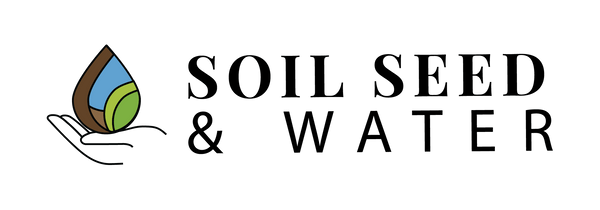
Creating a Balance with Organic & Chemical Fertilizer
Share
When it comes to nourishing plants, finding the right fertilizer can be a bit overwhelming. The debate between organic and chemical fertilizers is still ongoing. Organic and chemical fertilizers each have their own advantages and considerations, especially on how to strike a balance between these two approaches in order to promote soil sustainability, and minimize environmental impacts.
Organic fertilizers are derived from natural sources such as compost, manure, and bone meal. They are typically slow-release, meaning they gradually provide nutrients to plants over time. This is due to the nutrient content needing to be converted into inorganic forms by soil bacteria and fungi before plants can use them. Typically, these fertilizers contain a wider range of nutrients, although in lower concentrations compared to synthetic options.
Additionally, adding organic fertilizers will enhance soil texture by increasing the soil’s organic matter content. This leads to better water retention, improved aeration, an improved soil fauna and microbial community. Higher organic matter content in the soil also results in a more robust soil structure. This reduces the risk of nutrient leaching and runoff, which can contaminate water sources.

Chemical or synthetic fertilizers are manufactured to provide specific nutrients in precise quantities. They are typically fast-release, offering immediate nourishment to plants. Each chemical fertilizer usually functions as a source of specific few essential nutrients like nitrogen, phosphorus, potassium, sulphur, and micronutrients. These fertilizers offer precise nutrient ratios, allowing for tailor made fertilizer application programmes to meet the specific needs of the plants throughout its life cycle.
Due to the nature of the nutrients usually being released in an inorganic form, chemical fertilizers can provide a quick nutrient boost, which can be particularly beneficial during critical growth stages or in nutrient-deficient soils.
Therefore, the way forward in order to harness these benefits, is to achieve a balance by applying both organic and chemical fertilizers. The key to realising this will require several steps. Usually, a comprehensive soil test is required. This is to understand the nutrient profile and pH levels of the soil. This information will guide fertilizer choices and application rates, helping address any specific deficiencies in said soil.
The conventional method is by using organic fertilizer, which improves soil structure and microbial health, and combining it with a supplement of chemical fertilizers for immediate nutrient availability. This approach combines the long-term benefits of organic matter with the quick-response advantages of synthetic nutrients. For example, mixing well-aged compost with a balanced chemical fertilizer and applying it during the growing season.
Another method is by rotation, alternating the usage of both organic and chemical fertilizers. This rotation strategy is less jarring to the soil ecosystem and can help maintain soil health. For instance, using organic fertilizers in one growing season and switching to chemical fertilizers in the next, or vice versa. This approach helps balance nutrient availability and soil health over time.

Nevertheless, success of said fertilizer combination strategies will still rely on continuously monitoring plant growth and soil health and the need to adjust the fertilization strategy based on observations and soil test results. Also, of equal importance, is minimising over-application of either type of fertilizer. Over-application can lead to nutrient imbalances and result in harm to the environment and plants. Adhering to recommended application rates and timing, allows efficient nutrient use and reduces the risk of runoff. This ensures that the fertilizer combination approach remains effective and sustainable.
In conclusion, finding the right balance between organic and chemical fertilizers is crucial for achieving optimal plant growth and maintaining soil health. Both organic and chemical fertilizers have their merits. By understanding the strengths and limitations of each type of fertilizer and employing a balanced, informed approach, it can lead to enhanced sustainability and productivity of a garden or farm.
